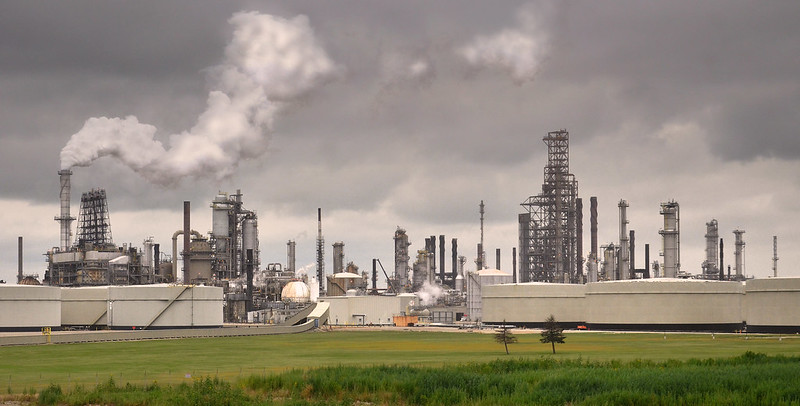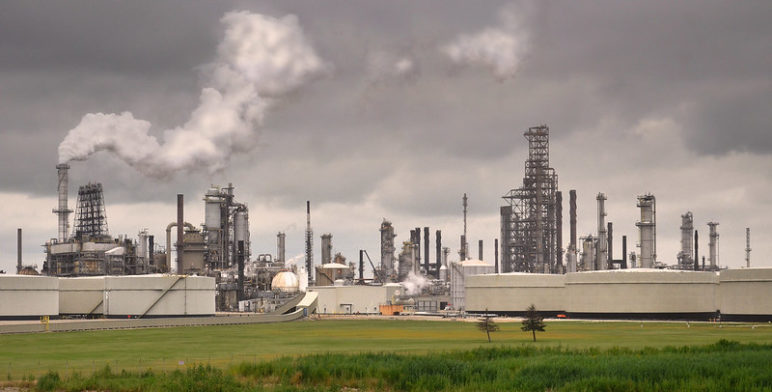When Pierce Transit announced late last year that it would be rolling out a carbon-neutral gas to power its fleet, it introduced a new term to our vernacular: responsibly sourced gas (RSG). It didn’t take long for skeptics to expose the true carbon footprint of this newly branded gas—it’s nowhere near zero. But were the transit agency’s intentions directionally correct, despite the misleading marketing? Eighty percent of Pierce Transit’s bus fleet is fueled by natural gas today; electric and hybrid electric buses make up only 18 percent. Until the transit agency can transition all of its buses to electric, likely many years out due to lead times for charging infrastructure and fleet turnover rates, it is saddled with the unfortunate reality of burning gas.
This paradox is likely to play out in many corners of our region as Cascadia struggles with the challenges of decarbonization: Many fossil fuel infrastructure investments haven’t reached their end-of-life; at the same time, the region can’t afford the emissions that result from the use of fossil fuels.
Still, Pierce Transit might have been heading in the right direction if RSG results in net emissions reductions while the agency electrifies its fleet. Whether this is the case remains to be seen. At best, RSG is to regular gas as low-tar cigarettes are to regular smokes: marginally less dangerous but no one’s idea of a healthy choice for the long term.
What’s responsible about RSG? Lower upstream methane pollution
At a basic level, responsibly sourced gas, or RSG, comes from sources with lower levels of upstream methane leaks than the average natural gas well. Methane leaks are receiving a lot of attention these days because they are much more common than previously understood, and methane is a critical contributor to climate change. In fact, methane has more than 80 times the global warming potential over a 20-year time period as carbon dioxide.
More specifically, RSG is produced at sites that have undergone a process verifying their compliance with a higher set of standards for greenhouse gas pollution than current regulations require. It may also include compliance with higher standards for water stewardship, land management, and community impacts. Dr. Anna Scott, chief science officer for Project Canary, a company that certifies RSG, states, “The emissions savings that we calculate that you can get simply by switching from industry average gas to certified responsibly sourced gas are significant—up to 18 percent over the lifecycle. That’s including combustion of the natural gas.”
But methane leaks from RSG are still non-zero, and combustion emissions from RSG are identical to the prevailing conventional alternative, or what we might now refer to as irresponsibly sourced gas.
At best, RSG is to regular gas as low-tar cigarettes are to regular smokes: marginally less dangerous but no one’s idea of a healthy choice for the long term.

Who verifies RSG? A host of unregulated new verification companies
It’s important to understand that currently there is no US federal regulation of methane emissions from the oil and gas sector. None. So gas producers must volunteer themselves to review if they wish to obtain the RSG certification for their products.
In the past five years, a handful of independent companies have popped up to provide just such voluntary RSG certification services to gas producers. Each certifier sets its own performance rating and varies in its approach and model. Some disclose their methane measurements; others do not. Some use continuous monitoring; others rely on discrete measurements. Some are for-profit; others operate as nonprofits. Some certifiers rely on independent data audits; others allow self-auditing. In short, it’s a bit of a free-for-all.
And gas producers don’t have to perform all that well to get a rating from one of these certifiers: depending on the certifier, they can leak as much as two percent of all the gas they extract from the ground and still win certification of their product as responsibly sourced. To put this in context, the estimated average leakage rate for all US gas, irresponsible and “responsible,” is 2.3 percent.
Certified producers can leak even more if they can demonstrate “dedication to continuous improvement.” While the top-tier ratings for RSG are reserved for producers with the lowest leakage rates (e.g., MiQ’s “A” rating requires leakage rates of less than or equal to 0.05%), in some cases entities emitting above-average amounts of methane can still earn enviable-sounding ratings. For example, producers certified by Project Canary can earn a Gold rating as long as they have leak monitoring in place and a commitment to reduce leaks in the future.
RSG for buyers: Driving lower emissions or greenwashing?
Oregon and Washington have signaled, with their recent clean electricity laws, greenhouse gas targets, and emissions policies, that a widespread use of clean energy, especially clean electricity, is the decarbonization pathway of choice. Yet phasing out the use of natural gas to heat our homes and power industry will take many years, perhaps three decades or more, to achieve. In the meantime, if utilities and industry are serious about reducing their emissions from gas, it is worthwhile for them to obtain the commodity from the best-managed sources available.
Yet for RSG to live up to its stated goals, it needs to return net emissions savings—not only for the customer purchasing the commodity but also across the entire natural gas value chain. As is the case in several markets focused on emissions, carbon leakage can occur. Do the dirtiest producers lose sales when a buyer chooses RSG? Or does the same volume of irresponsibly sourced gas find its way to a less scrupulous buyer?
Ideally certifications would drive continuous emissions improvement within the industry, subscribing more and more producers because demand for RSG outweighs supply. And that is the sea change that RSG proponents argue will happen. For example, Laura Owens, a manager with RSG certifier MiQ, says, “We think, if you can track these improvements for what passes as good, low-emissions gas over time, as the demand and practices improve, these certifications will have a multiplier effect.” It remains to be seen whether this broader market shift will in fact occur. Today, producers seeking the RSG rating only make up around 10-11 percent of US gas production so far.
A less charitable view of the situation might conclude that the gas industry has invented another greenwashing tactic. Indeed, some gas industry insiders view the RSG movement as a lifeline for continued operations, answering investors’ concerns over gas’s climate impacts. “How can oil and gas companies take credit for strong emissions reduction performance and monetize their efforts?” asked gas industry consultant Thomas Fox at Highwood Emissions Management in a May 2021 report. Fox went on to explain that voluntary emissions reduction approaches like RSG are the answer.
Beyond voluntary certification: EPA considers methane standards
At this point, you may be wondering: is cleaning up the gas sector something that should be left to voluntary efforts? Probably not, and thankfully, this is likely changing. By executive order earlier this year, President Biden instructed the EPA to create methane emissions rules for both new and existing wells, pipelines, and other equipment. The rules do not cover distribution pipelines or LNG terminals.
Proposed federal rules released this month could reduce methane leakage by as much as 920 MMT CO2e from 2023 through 2035, according to EPA analysis. Annualized, this would reduce methane emissions by an average of 71 MMT CO2e per year. This is 36 percent lower than current annual leakage rates for the entire US oil and gas sector, far surpassing the reductions achieved by the small number of producers voluntarily reducing leaks. Realistically, all natural gas produced in the US could be “responsibly sourced” if regulators make it the de facto standard.
Above all, policy makers should keep in mind that gas, responsibly sourced or otherwise, is no replacement for a full transition to clean renewable energy sources. By its own account, the oil and gas industry could meaningfully reduce emissions of the powerful heat-trapping gas methane to 0.2 percent of total production, which would contribute to trimming the oil and gas sector’s 2030 methane emissions to 77 percent below what they would be with no action. But in no scenario does RSG undo the basic fact that gas is a carbon fuel.
In sum, keep our eyes on the true clean energy prize
As long as gas remains in our region’s energy portfolio and the infrastructure supporting it has not reached end-of-life status, cleaning up methane leaks and better water and land management are positive developments, as long as they are actually happening. The upstart certification industry, in all its inconsistency, merits scrutiny by potential buyers—especially those in jurisdictions committed to climate action.
Ultimately, reducing methane emissions from the natural gas sector is critical, whether voluntarily or via regulations like those proposed by the EPA. But it must occur alongside the urgently needed transition to cheaper and more impactful decarbonization alternatives to gas like clean, renewable electricity. Considering that there is no wiggle room in the world’s emissions budget, we can look beyond incremental improvements to solutions that instead zero out greenhouse gas emissions.










